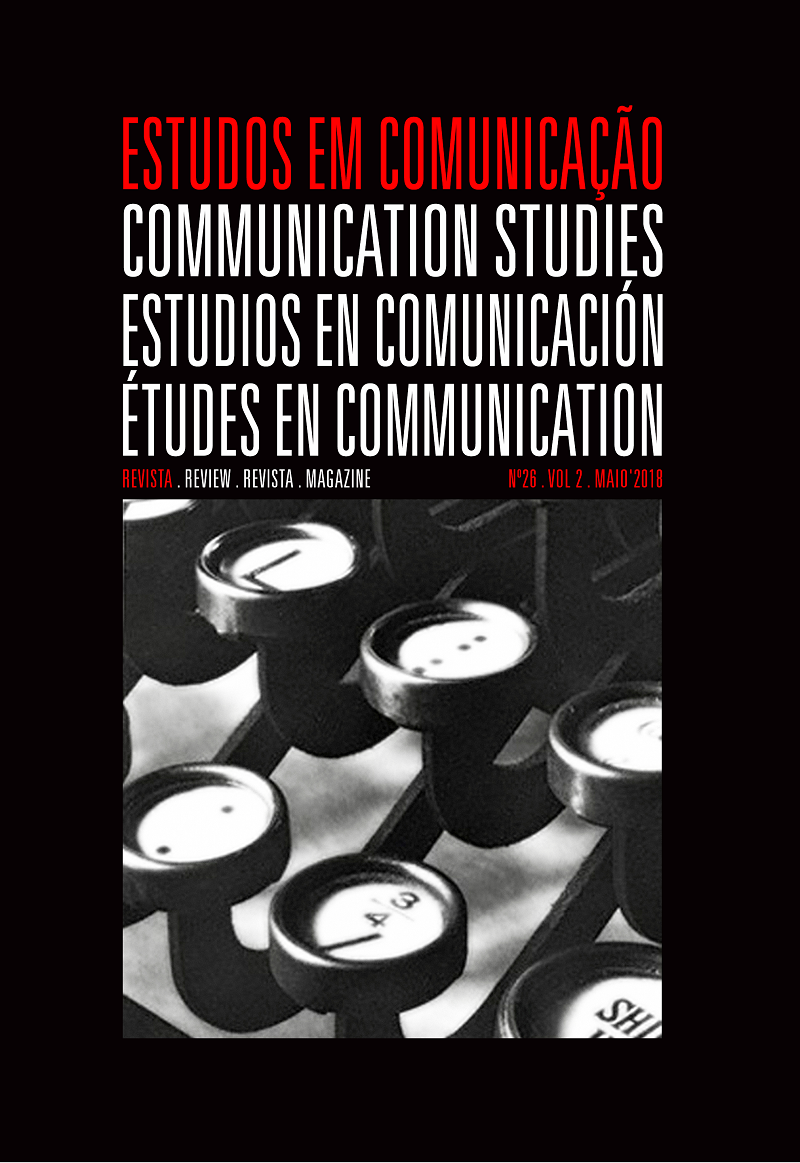Enquadramentos midiáticos de Lula na imprensa francesa: uma análise do Le Monde e Le Figaro
Keywords:
framing, politics, Lava Jato Operation, Lula.Abstract
This paper analyses the media news frames by the French newspapers Le Monde and Le Figaro about Brazil’s former president Luiz Inácio Lula da Silva in the Lava Jato investigation. The analysis of 32 articles published by the papers suggests that Lula is constantly framed as a successful in his two terms as president and to his personality. However, the titles frames are more negative than the content of the texts.
References
Coleman, R.; Thorson, E. & Wilkins, L. (2011).Testing the effect of framing and sourcing in health news stories. Journal of Health Communication, 16, 941-954.
D’Angelo, P.; Calderone, M. & Territola, A. (2005). Strategy and issue framing: an exploratory analysis of topics and frames in campaign 2004 print news. Atlantic Journal of Communication, 13(4), 199-219.
David, C. et al. (2011). Finding frames: comparing two methods of frame analysis. Communication Methods and Measures, 5(4), 329-351.
Entman, R. (1994). Framing: toward clarification of a fractured paradigm. In M. Levy & M. Gurevitch (ed.), Defining media studies. New York: Oxford University Press.
Goffman, E. (1974). Frame analysis: an essay on the organization of experience. New York: Harper.
Hample, D.; Warner, B. & Young, D. (2009). Framing and editing interpersonal arguments. Argumentation, 23, 21-37.
Herkman, J. (2016). Construction of populism. Meanings given to populism in the nordic press. Nordicom Review, 37(special issue), 147-161.
Jasperson, A. (1998). Framing and the public agenda: media effects on the importance of the Federal Budget Deficit. Political Communication, 15, 205-224.
Kepplinger, H. M.; Geiss, S. & Siebert, S. (2012). Framing scandals: cognitive and emotional media effects. Journal of Communication, 62, 659-681.
Lecheler, S. et al (2015). The effects of repetitive news framing on political opinions over time. Communication Monographs, September, 82(3), 339-358.
Lecheler, S.; De Vreese, C. H. (2011). Getting real: the duration of framing effects. Journal of Communication, 61, 959-983.
Matthes, J. & Kohring, M. (2008). The content analysis of media frames: toward improving reliability and validity. Journal of Communication, 58, 258-279.
Menashe, C. & Siegel, M. (1998). The power of a frame: an analysis of newspaper coverage of Tobacco Issues – United States, 1985-1996. Journal of Health Communication, 3, 307325.
Pedersen, R. T. (2014). News media framing of negative campaigning. Mass Communication and Society, 17, 898-919.
Porto, M. (2004). Enquadramentos da mídia e política. In A. A. C. Rubim (org.), Comunicação e política: conceitos e abordagens (pp. 73-104). Salvador: Edufba.
Seo, K.; Dillard, J. & Shen, F. (2013). The effects of message framing and visual image on persuasion. Communication Quarterly, November–December, 61(5), 564-583.
Thompson, J.B. (2002). O escândalo político: poder e visibilidade na era da mídia. Petrópolis: Vozes.
Yan, C.; Dillard, J.; Shen, F. (2012). Emotion, motivation, and the persuasive effects of message framing. Journal of Communication, 62, 682-700.
Yang, A. (2015). Building a cognitive-sociological model of stereotypes: stereotypical frames, social distance and framing effects. Howard Journal of Communications, 26, 254-274.
Weber, M. H. (2000). Comunicação e espetáculos da política. Porto Alegre: Ed. UFGRS.
Downloads
Published
Issue
Section
License
Estudos em Comunicação/Communication Studies is an Open Access journal. All its content is freely available without charge to the user or his institution. Users are allowed to read, download, copy, distribute, print, search, or link to the full texts of the articles in this journal without asking prior permission from the publisher or the author. Estudos em Comunicação, by Labcom, is licensed under a Creative Commons Atribuição-NãoComercial-SemDerivações 3.0 Unported License. By submitting your work to Estudos em Comunicação/Communication studies you confirm you are the author and own the copyright, that the content is original and previously unpublished, and that you agree to the licensing terms.


